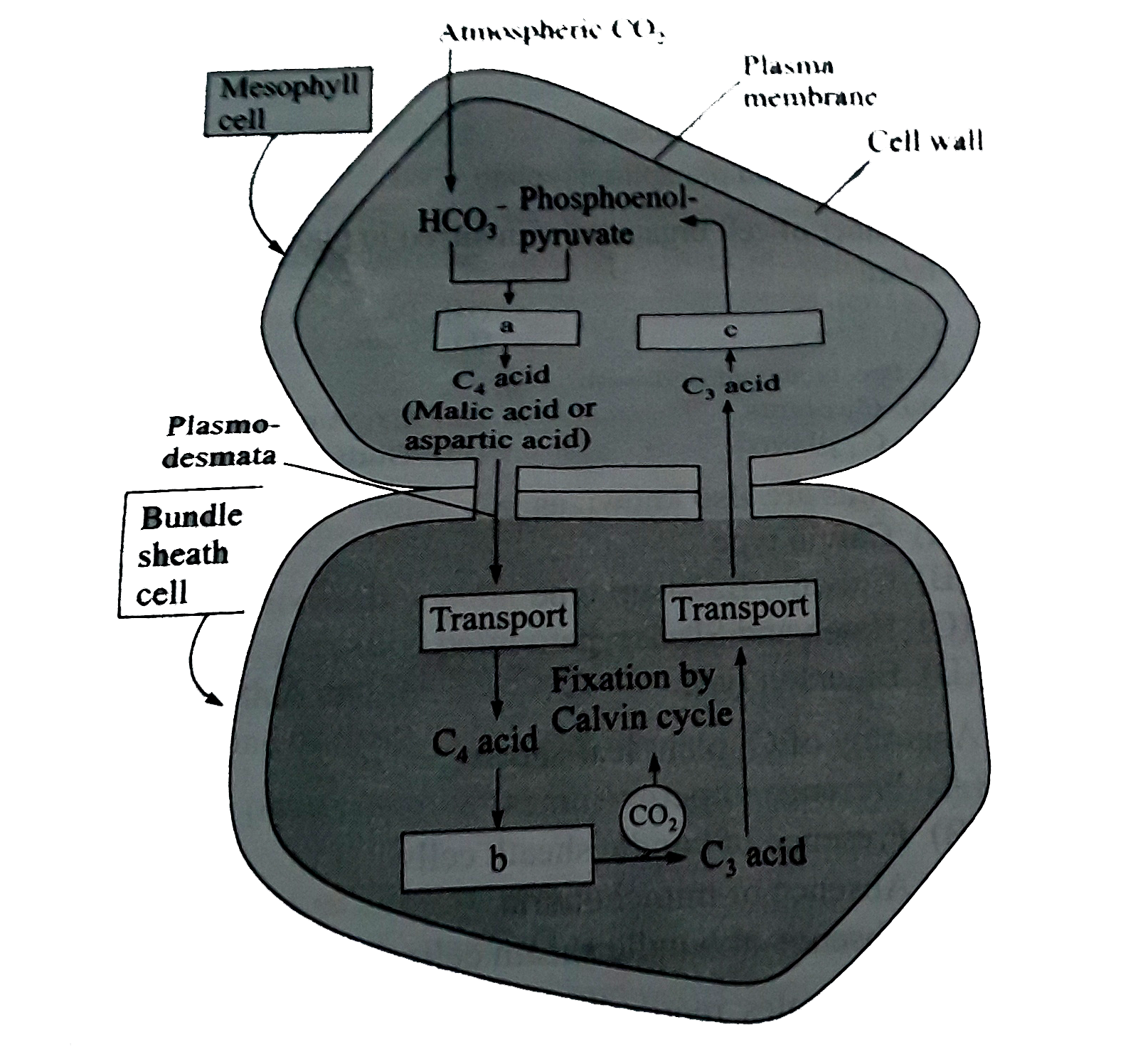Complete the following paragraph by selecting the correct options for the blanks A, B and C.
Saliva is mainly produced by three pairs of salivary glands, the ...............A................ (cheek), the ....................B................... (lower jaw) and the . (below the tongue). These glands situated just outside the buccal cavity secrete salivary juice into the buccal cavity.
A: Sublingual, B: Parotid, C: Sub- Maxillary/Sub-Mandibular
A: Sub-Maxillary/Sub-Mandibular, B:Sublingual, C: Parotid
A: Parotid, B :Sub-Maxillary/Sub- Mandibular, C: Sublingual
A: Lingual, B: Parotid, C: Maxillary
The correct Answer is:C
To complete the paragraph regarding the salivary glands, we need to identify the correct glands for each blank based on their anatomical locations.
1. Identify the glands:
- Blank A (cheek): The salivary gland located in the cheek area is the Parotid gland.
- Blank B (lower jaw): The salivary gland located in the lower jaw is the Submaxillary gland (also known as the Submandibular gland).
- Blank C (below the tongue): The salivary gland located below the tongue is the Sublingual gland.
2. Fill in the blanks:
- For blank A, we write Parotid.
- For blank B, we write Submaxillary.
- For blank C, we write Sublingual.
3. Final paragraph:
Saliva is mainly produced by three pairs of salivary glands, the Parotid (cheek), the Submaxillary (lower jaw), and the Sublingual (below the tongue). These glands situated just outside the buccal cavity secrete salivary juice into the buccal cavity.
- Blank A (cheek): The salivary gland located in the cheek area is the Parotid gland.
- Blank B (lower jaw): The salivary gland located in the lower jaw is the Submaxillary gland (also known as the Submandibular gland).
- Blank C (below the tongue): The salivary gland located below the tongue is the Sublingual gland.
- For blank A, we write Parotid.
- For blank B, we write Submaxillary.
- For blank C, we write Sublingual.
Saliva is mainly produced by three pairs of salivary glands, the Parotid (cheek), the Submaxillary (lower jaw), and the Sublingual (below the tongue). These glands situated just outside the buccal cavity secrete salivary juice into the buccal cavity.
Topper's Solved these Questions
Similar Questions
Complete the following by selecting the correct option for the blanks A , B and C from the options given below.
The symbiotic association formed by fungi with roots of higher plants is known as .... A....it is mainly formed by members from the genus.... B..... The fungal symbiont in these associations is responsible for absorbing......C......from the soil and passing it to the plant. It also has many other benefits like resistance to root borne pathogens tolerance to salinity and droughts , etc......D..... Seeds cannot germinate and establish without the presence of ......A .....
View SolutionIn human beings, the three pair of salivary glands and numerous buccal glands produce about
View Solution
Knowledge Check
Complete the following paragraph by selecting the correct options for the blanks A , B ,and C
......A.....is the structural and functional unit between the embryo and the maternal body. It is connected to the embryo by ........B....... It also acts as an ..........C........ tissue and secretes many hormones essential for maintaining pregnancy.AA: placenta , B: chorionic villi, C: endocrineBA: placenta , B: umbilical cord , C: endocrineCA: placenta , B: umbilical cord , C: exocrineDA: placenta , B: chorionic villi, C: exocrineComplete the following paragraph by selecting the correct option for the blanks A,B and C.
The thymus gland is located between the lungs behind the sternum on the ......A.... Side of the aorta. .....B..... Secreted by the gland plays a major role in the differentiation of T- lymphocytes which provide ......C...... They also promote antibody production which provides.....D....AA: dorsal , B : Thymic humoral factor , C : humoral immunity , D : Cell - mediated immunityBA: Ventral , B : Thymopoietin , C: humoral immunity , D : cell - mediated immunityCA: Ventral , B : Thymopoietin , C: humoral immunity , D : cell - mediated immunityDA: Ventral , B : Thymosin , C: cell - mediated , D : humoral immunitycomplete the following paragraph by selecting the correct options for the blanks A,B, and C from the options givens below.
Cells of the human body exhibit three types of movements namely amoeboid , ciliary , and muscular. Macrophages and leucocytes present in blood exhibit
........ A...... movement.
....... B ...... movement is seen in our internal tubular organs. Movements of our limbs, jaws etc., require ........C ..... movement.AA : amoeboid , B : muscular , C: ciliaryBA : muscular, B : ciliary , C : amoeboidCA : amoeboid , B : ciliary , C: muscularDA : ciliary, B: amoeboid , C : muscular
In human beings, the three pair of salivary glands and numerous buccal glands produce about
View SolutionComplete the following paragraph by selecting the correct options for the blanks A ,B and C from the options given below :
The most infections human ailment of ......I.... is caused by a group of viruses known as rhinoviruses. They infect the nose and the respiratory tract , but not the. .....II....... The droplets from an infected person are either ......III.... directly , or spread via contaminated objects.
View SolutionIn human beings, the three pairs of salivary glands and numerous buccal glands produce about : 1.0dm3 of saliva per day
View SolutionStudy the pathway given below :
In which of the following options correct words for all the three blanks a,b, and c are indicated.

View SolutionComplete the following paragraph by selecting the correct option
Pelvic girdle consists of two coxal bones. Each coxal bone is formed by the fusion of three bones (i) ,(ii) and (ii) . At the point of fusion of the above bones is a cavity called (iv) to which the thigh bone articultes. The two halves of the pelvic girdle meet ventrally to form the pubic symphysis containing (v) cartilage.
View Solution
